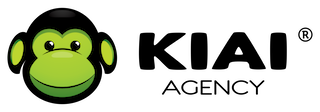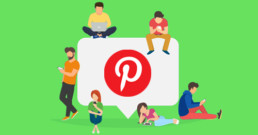The Do’s and Don’ts of Using Pinterest for Social Media Marketing
What do you first think of when you hear the word ‘Pinterest’? Perhaps you assume one or more of the following about it:
- A site made only for women to use
- A place with tons of food and wedding posts, and not much else
- A website that your ideal target audience isn’t using
- A waste of time for your business
It’s time to ditch those assumptions once and for all! Why? Because none of them are true! In fact, Pinterest has continued to grow and grow as a much-needed social media account for business owners.
What is Pinterest?
Pinterest is a free website that is designed to act like a pinboard—the kind you pin good ideas for future use up on so that you don’t forget! The site was first introduced to the world of social media and marketing back in March 2010, and it was founded by three people: Ben Silbermann, Paul Sciarra, and Evan Sharp. It’s basically a “catalogue of ideas” that inspires people to “go out and do that thing” as summed up by Silbermann.
Rather than being a purely image-based and social website, Pinterest is in fact a site meant for people of action—they have every intention of using the images they’re saving and cataloguing online.
Why You Should Have Pinterest For Your Business
There are a lot of excellent reasons why Pinterest is definitely worth considering using for your business, even if it doesn’t seem that way.
- It helps you understand what people connect with, rather than who. For some, it’s easier to analyze this kind of data than it would be to find out who is viewing your posts.
- Pinterest is great for mobile traffic! In fact a whopping 80% of people use mobile devices (phones and tablets) to access it.
- Videos can be added and pinned too, not just images.
- It helps build personal brands. Usually the types of pins that people gravitate towards are from brands they’ve never heard of, which is excellent if your business is smaller or just beginning to flourish.
- It’s best for content marketing that provokes action, not just reading and clicking to websites. This forces us to rethink our marketing strategies and stay on our toes when it comes to what kind of content we want to provide visitors!
- It’s amazing for sales! According to a survey, 87% of Pinterest’s users have claimed to make a purchase thanks to their usage of Pinterest.
- New opportunities are being presented every day. Recent developments have included ensuring that pins don’t appear as advertisements (even though they are). This is a game-changer in a sense because you can suggest and promote your business without making it seem intrusive or annoying.
Do’s and Don’ts
- Do use it if your business has tons of images to share! Like Instagram, Pinterest is a great visual website.
- Don’t go overboard with the keyword targeting.
- Do follow the correct setup for your business profile.
- Don’t assume women are the only ones using Pinterest! While much of the content is indeed focused on helping women, in reality 40% of men do use Pinterest. Be sure to keep them in mind too when you’re creating content to post and pin!
- Do create a business profile. You can do this even if you have a personal profile already set up on Pinterest.
- Don’t provide content that tricks people. Remember, people on Pinterest are there to find actionable things worth sharing with others, not to click to read things.
- Do add videos as well as images to your board! Video marketing still has its place even on sites like Pinterest.
- Don’t treat the site like a social one like Facebook and Instagram. It’s less of a social site than an actionable one.
- Do use the mobile app and make this accessible to smartphone users! This can help increase mobile traffic to your pins.
- Don’t pin new images or posts infrequently or just once and then never again. A magic number would be 10 new pins per day.
- Do add “Pin it” button features to your website for Pinterest. This can help your customers stay organized with their own accounts.
- Don’t start using Pinterest without a plan. What do you want to get out of your account? It could be growing your email list, or getting traffic to your blog, or selling your own products and services. Planning ahead is key to a healthy Pinterest account.
- Do create pins that aren’t strictly about your own business. Yes, you read that right. News, trends, inspiration, and so on are all pin ideas that you could use on Pinterest as well. They may not have to do entirely with your business, but they can be related to the industry your business works within. You don’t have to pin your competitors’ products (we don’t recommend it), but you do have to share content related to what your business does. Otherwise, you won’t build authority, credibility, or brand awareness.
- Don’t use Pinterest if your business applies to any of the following: it’s burnt out on social media sites, your product photos aren’t visually appealing, you have nothing more than to share what you do, and you have other social media accounts that meet your goals well enough already.
- Do notify your customers that your business has Pinterest if and when you create an account. That way you can organically build up your audience on the platform if you need followers.
- Don’t ignore your analytics. You can check them to see who’s sharing your content and what kind of content is really resonating with your followers.
If you’re struggling with both Pinterest and your business’s social media, getting help from a professional agency may be your next best strategy. They can help you set up your account as well as guide you on the types of content your target audience is really looking for.
Feel free to follow our agency on Pinterest if you’d like to get to know us better! You can even Pin this blog post for later!
Creative Commons Attribution: Permission is granted to repost this article in its entirety with credit to KIAI Agency Inc. and a clickable link back to this page.
Daniela Torres
Daniela Torres is the founder and Creative Director of KIAI Agency Inc. With over 12 years of experience working as a journalist, press officer and graphic designer, Daniela is a brand strategist that has been leading design and marketing projects for multiple industries. She’s also the author of the book “Build Your Brand – The 10 essential steps before launching your business”.

